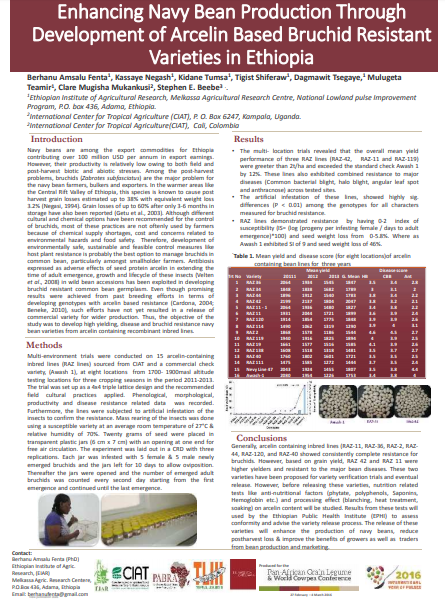Enhancing navy bean production through the development of arcelin-based bruchid resistant varieties in Ethiopia
Summary
Navy beans are an important export commodity for Ethiopia, contributing over $100 million per annum in export earnings. However, their productivity is relatively low, owing to both field and post-harvest biotic and abiotic stresses. Among the post-harvest problems, bruchids (Zabrotes subfasciatus) are a major problem for farmers, bulkers, and exporters. In warmer areas, like the Central Rift Valley of Ethiopia, this species is known to cause post-harvest grain losses of up to 38% with an equivalent weight loss of 3.2%. Grain losses of up to 60% after only 3–6 months in storage have also been reported. Although different cultural and chemical options have been recommended for the control of bruchids, most of these practices are not often used by farmers because of chemical supply shortages, excessive costs, and concerns related to environmental hazards and food safety. Therefore, the development of environmentally safe, sustainable, and feasible control measures like host plant resistance is probably the best option to manage bruchids in common bean, particularly among smallholder farmers. Antibiosis, an adverse effect of seed protein arcelin which extends the emergence, growth, and lifecycle of these insects in wild bean accessions, was exploited to help develop bruchid-resistant common bean germplasm. Even though promising results were achieved from past breeding efforts in terms of developing genotypes with arcelin-based resistance, such efforts have not yet resulted in the release of commercial varieties for wider production. Thus, the objective of the study was to develop high-yielding, disease- and bruchid-resistant navy bean varieties from arcelin-containing recombinant inbred lines.
Open resource Download resource Access resource on external site

